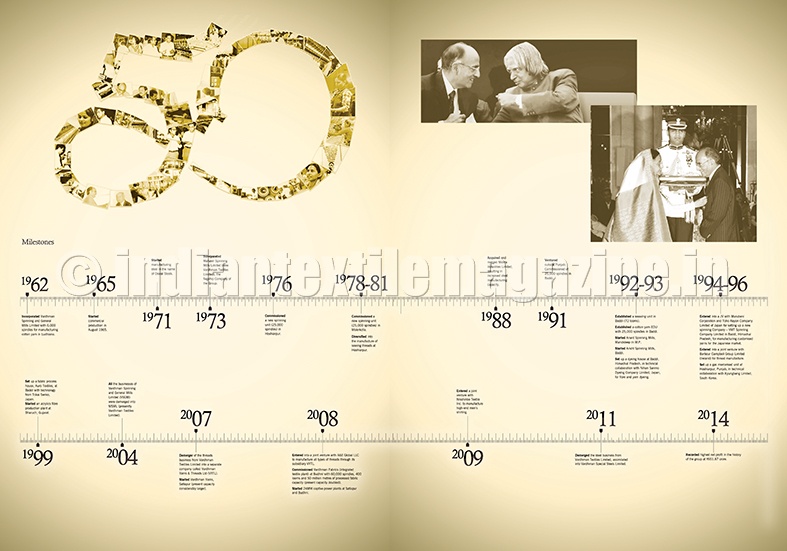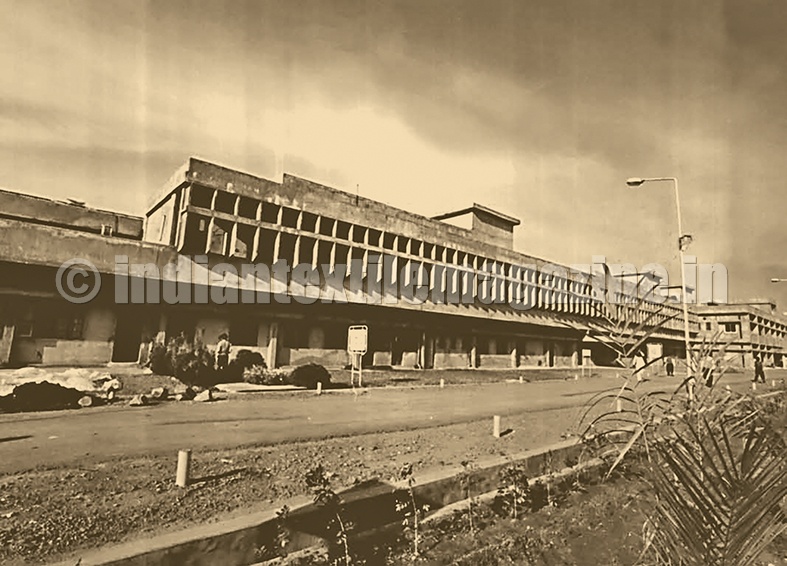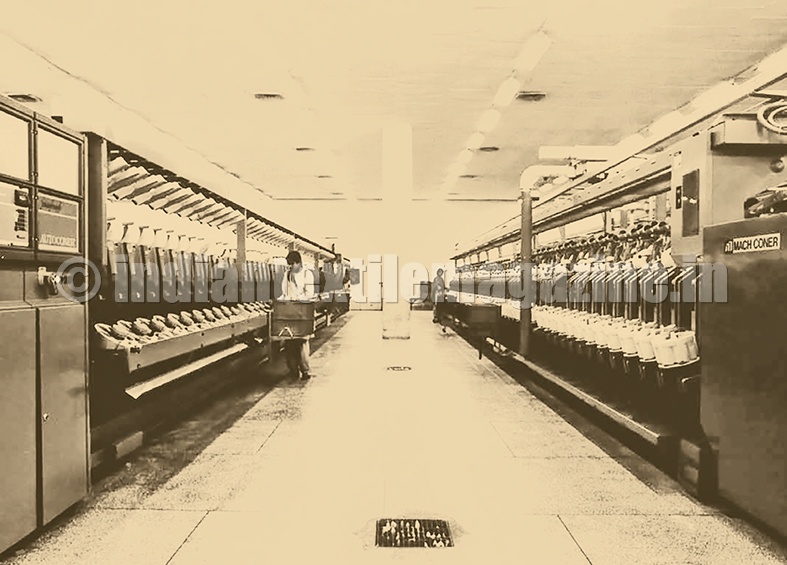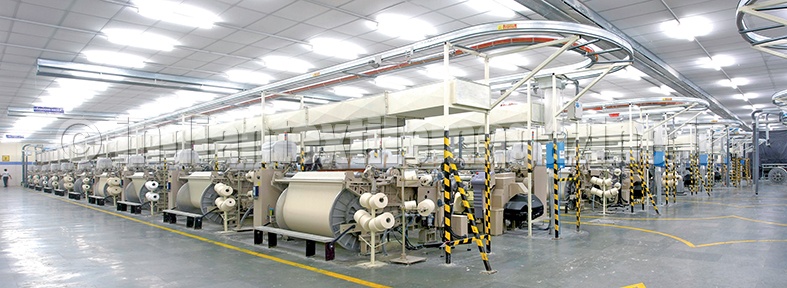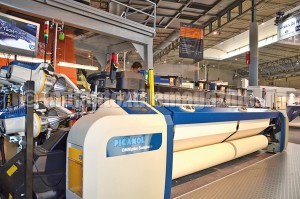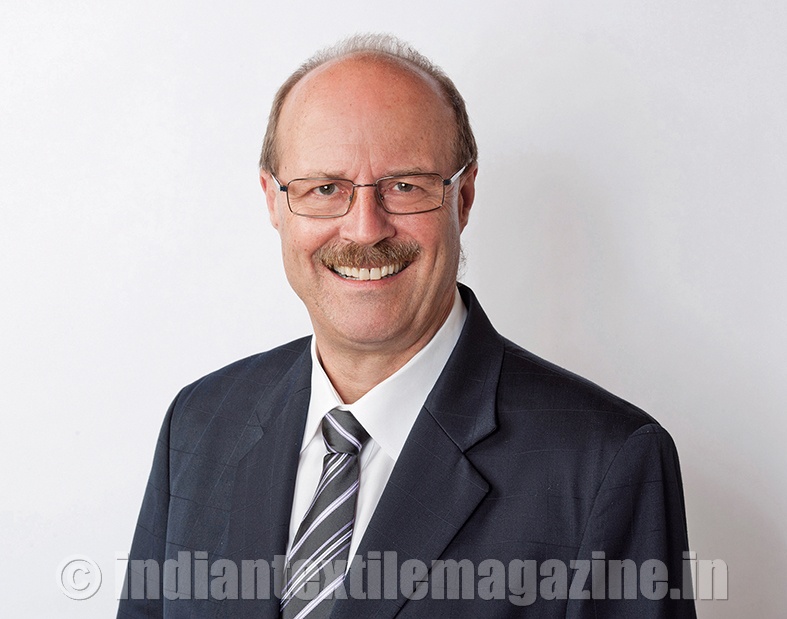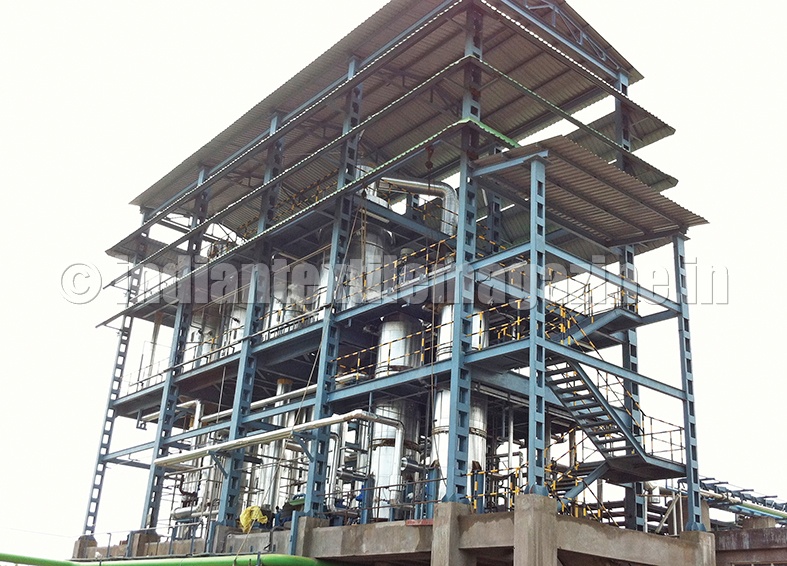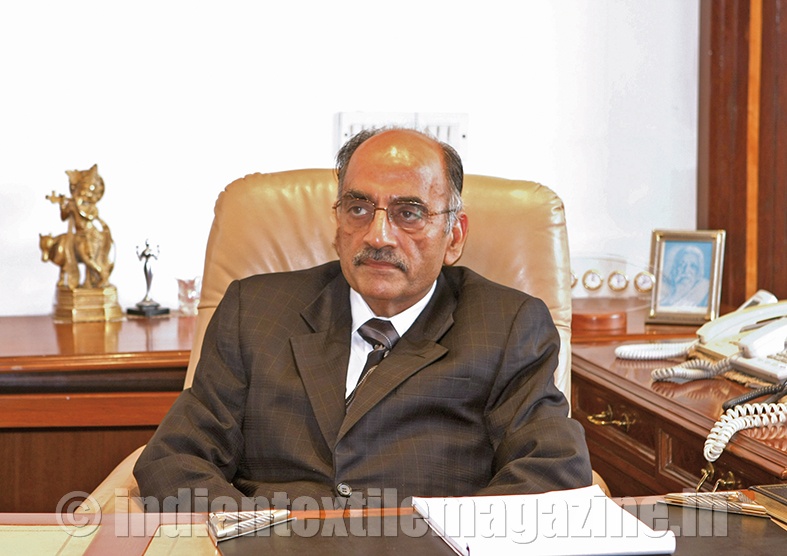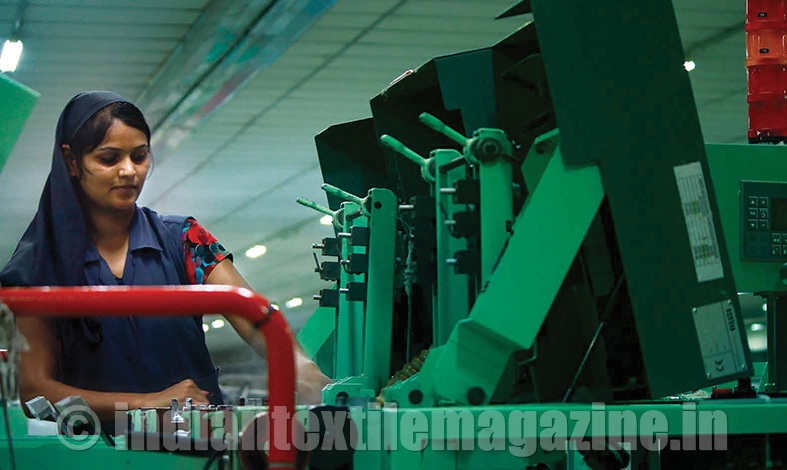India’s most respected textile conglomerate – Decades of sustained growth despite challenges
Vardhman’s journey of 50 years is replete with experiences both bitter and sweet, which have helped shape its organisational character. Textile business is one of the most challenging, marked by capital intensity, global competition and cyclicality. In these 50 years, the Vardhman Group reported profits in 47 years, grew its profits in 29 years and increased its topline in 44 years. The group has emerged as more than just another textile player. It has enriched the society at various levels and in diverse ways.
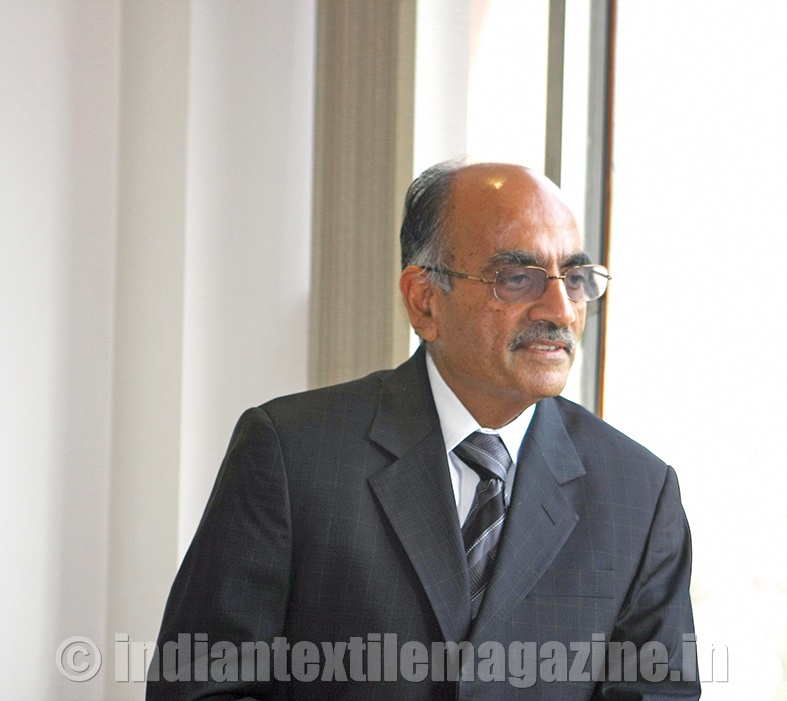
“We are in an interesting and exciting phase in our history of 50 years. While we have accomplished a great deal, our journey is never complete, particularly in an everchanging environment where threats and opportunities present themselves perennially. Through our experience and knowledge, we need to recognise these threats and develop capacity to adapt-to not only survive but also thrive”, says Mr. S.P. Oswal, Chairman.
Vardhman has emerged as one of the largest integrated textile manufacturing groups in India. It has invested in an operating capacity of more than a million spindles, including 7,188 rotors.
Vardhman has emerged as one of the largest integrated textile manufacturing groups in India. It is India’s second largest producer of sewing threads, a leading manufacturer of hand-knitting yarn, one of the top manufacturer-exporters of cotton yarn and a prominent manufacturer of piece-dyed fabric.
The group has 22 manufacturing facilities across India, employing more than 25,000 people. The company enjoys global alliances with leading textile companies such as American & Efird Global LLC (USA), Marubeni Corporation (Japan) and Nisshinbo Textile, Inc. (Japan).
In the last 50 years, the Vardhman Group has emerged as more than just another textile player. It has enriched society at various levels and in diverse ways. The change Vardhman embarked on two initiatives. It focused on developing more and more new products; it partnered global textile players to stay at the cutting-edge of technology.
Spinning
Vardhman, along with its subsidiaries, is one of the largest yarn manufacturers in India, manufacturing and dyeing fibres from 12 different facilities located across Punjab, Himachal Pradesh and Madhya Pradesh. It is a leading manufacturer and exporter of cotton yarn as well as a piece-dyed fabric. The company is also the second largest producer of sewing threads and market leader in hand-knitted yarns.
Vardhman’s yarn product basket is divided into three categories, namely, commodity, compact and specialised yarn, and delivers the widest range of specialised greige and dyed yarns (cotton, polyester, acrylic and other blends). The company’s yarn business is the largest revenue generator, accounting for nearly 60 per cent of its topline. Its yarn consumption is divided equally among domestic, international and captive fabric consumption.
Vardhman is one of the largest cotton yarn exporters to quality-conscious markets (the EU, the US and the Far East). Approximately 70 per cent of the yarn revenues are relationship-based, providing long-term revenue visibility.
Fabrics Business
This value-added component of Vardhman’s business makes a significant contribution to profitability. The company’s 1,316 looms and 114 million metres of fabric processing infrastructure are spread across five facilities in two locations. The company’s product basket comprised fabrics for tops (shirting) and bottoms (trousers/pants), specialised fabrics like yarn-dyed, special white and also finished fabrics with effects like liquid ammonia, teflon / nanocare (an oil and water repellent). It is also a leading manufacturer of lycra-based products in India.
Vardhman’s customers include prominent apparel makers like Esprit, GAP, Banana Republic, Old Navy, H&M and Benetton, among others. Almost 35 per cent of the company’s fabric output was exported in 2014-15.
Being a market leader in the handknit yarn category, Vardhman has 1,800 retail outlets across 650 cities and towns Pan-India, 45 sub-brands in various packaging categories under the umbrella brand of Vardhman knitting yarn. Products are marketed to around six million domestic consumers accounting for 40 per cent share of India’s organised sector and 30 per cent of the total market.
Product development
Vardhman has created a basket of 75,000 sewing thread varieties for a range of users (tailors to kite-flying enthusiasts, and from beauty salons to automobile seat manufacturers). It developed more than 15 varieties of acrylic fibre since inception in 1990.
Technical collaborations
Vardhman has entered into international relationship to upgrade technology and quality. It entered into technical collaboration with Nihon Sanmo of Japan for yarn and fibre dyeing in 1992, and with Kyung Bang of South Korea for gassed mercerised yarns in 1994. Another JV was signed with Toho Rayon for manufacturing customised yarn for the Japanese market in 1995 and a technical collaboration was signed with Nisshinbo Textile, Inc. (Japan) for cotton yarns in 2002.
For fabric, Vardhman has a technical collaboration with Tokai Senko of Japan for fabric processing in 1998 and with Nisshinbo Textile, Inc. of Japan for cotton fabric manufacture in 2007.
For sewing threads, the company has a JV agreement with Barbour Campbell in 1994 for the manufacture and sale of threads for special, footwear and automotive applications. It has also entered into a licensing arrangement with American & Efird LLC. in 2001 for the sale of A&E brands of threads in India. It signed a JV pact with same in 2008.
For acrylic fibre, the group set up Vardhman Acrylics Ltd. based on the technology sourced from Japan Exlan Company Ltd. The detailed engineering of the plant was carried out by Kawasaki Heavy Industries of Japan.
Initially, Vardhman Acrylics Ltd. was a joint venture of the Vardhman Group, Japan Exlan Company Ltd., and Marubeni Corporation in 1996. In 2008, Japan Exlan Company Ltd. and Marubeni Corporation divested their respective shareholdings to Vardhman and exited the joint venture.
More than 100 Indian customers (for yarn) have been associated with Vardhman for more than 20 years, close to 80 per cent of the company’s international yarn business is relationship-based, about 15 customers for fabrics (both domestic and international) enjoy more than a 10-year relationship with Vardhman.
Around six principal customers for acrylic fibre have been engaged with the company for more than 20 years, and over 1,250 customers for sewing threads have been engaged with the company for more than 10 years.
For decades, India was respected for its skilled shop-floor manpower. However, a decline in skill availability and rising wages are now affecting India’s competitiveness. Vardhman embarked on an important initiative to cushion the impact. It invested progressively in automated technologies to moderate its people dependence and reinforce business management.
IT solutions
The Vardhman Group invested Rs. 30.18 crores in IT solutions across business functions during 2000-2015. It invested in a new ERP solution to integrate multiple platforms used by different divisions and functions.
Vardhman accounts for almost 5.28 per cent of the total cotton yarn exported from India. Around 68 per cent of the company’s spindles were less than 10 years old as on March 31, 2015. Nearly 100 per cent of the yarn used by Vardhman in the manufacture of fabric is sourced from captive facilities. This has helped secure quality, consistency and availability.
The next growth phase
The Vardhman Group has always believed that the lynchpin of its business has been value-addition for its customers. Consequently, the company maintained some extragrey fabric capacity as it provided the flexibility to address customer requirements. As a result, capacity addition in the fabric processing segment seemed the most logical option.
The company expects fabric as a proportion of its overall product portfolio to grow faster than yarn. However, this does not mean that Vardhman will cease to be a dominant player in yarn business.
The company will expand its fabric and yarn capacities over the next few years. Business consolidation, followed by capacity augmentation, debt liquidation and prudent investment are expected to result in steady business growth at Vardhman over the next four to five years.
******************
 Rieter congratulates the Vardhman Group on its celebration of 50 glorious years. “Our partnership with such a company as a textile machinery supplier challenges us to provide innovations and technical advances in order to make them even more competitive and successful also in future. We are proud to be associated with the Vardhman Group and look forward to working with them closely for our mutual success in the industry.”
Rieter congratulates the Vardhman Group on its celebration of 50 glorious years. “Our partnership with such a company as a textile machinery supplier challenges us to provide innovations and technical advances in order to make them even more competitive and successful also in future. We are proud to be associated with the Vardhman Group and look forward to working with them closely for our mutual success in the industry.”
– Dr. Norbert Klapper, Chief Executive Officer,
Rieter Machine Works Ltd.
******************
Picanol, a trusted partner for years
Picanol has been associated with the Vardhman Group for nearly 20 years, starting with the Baddi project in 1997 and then with the new weaving plant at Budhni in Madya Pradesh in recent years. Picanol has installed almost 350 looms, including both airjet and rapier looms.
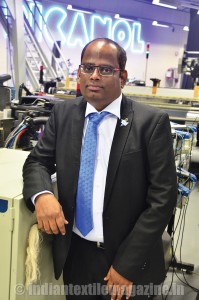
The Vardhman Group has three weaving divisions, and Picanol has been a partner in the all the units. Mr. P. Kasiviswanathan, Managing Director of Picanol’s Indian operations, says: “The Vardhman Group has always focused on diversification, and Picanol became its obvious partner offering the most performing and versatile machines, both rapier and airjet. Since 1997, we have built up an installed base of over 350 machines: 88 machines at the Auro plant in Baddi, 74 at MSML in Baddi and 180 machines at Vardhman Fabrics in Budhni, among which 20 OptiMax Rapier and 100 Omniplus Summum, our latest generation airjet machines”.
“It has been healthy partnership between Vardhman and Picanol in growing together, and our installed base in various fabric segments, viz., bottom weight, poplin, yarn dyed shirting, etc., in the same group shows our versatility and flexibility in catering to the growing customer demand”, adds Mr. Kasiviswanathan.
He further observes: “Good spinning and preparatory means start-up of good weaving!! This way we can rate the Vardhman Group at par with any textile professional company in the world in terms of product quality, work culture, house-keeping, professional treatment of suppliers, technical feedback to further improve our product, etc., it has been a pleasure working with the Vardhman Group.”
*******************
More than 500 Truetzschler cards in operation now
Truetzschler shares a very special relationship with Vardhman, and on this occasion of the 50th anniversary of the group the company extends its heartiest congratulations to the management.
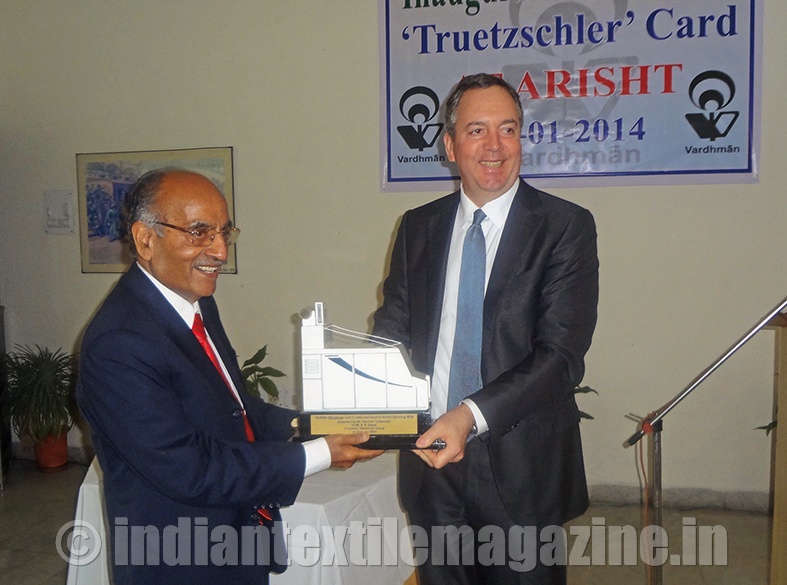
For Truetzschler, Vardhman is not just a business partner. There is indeed a special relationship between the two organisations. Vardhman today operates more than 500 Truetzschler cards, starting as old as DK 760 supplied in the 1990s and the latest TC11 cards supplied last year. Vardhman is amongst the top three worldwide customers for the maximum number of blowroom and cards. The mere number of machines from Truetzschler with Vardhman is testimony to the fact that the bonding is very strong and is being valued from both sides in the same spirit.
At the beginning of 2014, Truetzschler also celebrated the handing over of its 10,000th card in India to Mr. S.P. Oswal, Chairman & Managing Director, Vardhman Group, for the Baddi unit. This also coincided with the 125 years of Truetzschler and 50th anniversary of Vardhman.
The company values Vardhman as one of the most professional and value-based organisations with its strong focus on systems and a vision to attain greater heights.
*********************
Saurer, a reliable partner in progress
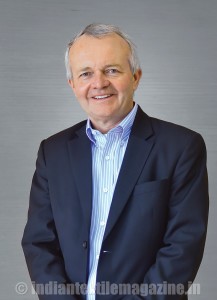
Mr. Martin Folini, CEO, Saurer Group, writes: “On behalf of the Saurer Group I would like to extend my sincere congratulations to the Vardhman Group on its 50th anniversary. The group is recognized both within and without as a frontrunner in quality and operational excellence. As one of the largest integrated mills in India, Vardhman has been setting many standards for the textile industry during its 50 years of existence.
“We at Saurer are proud to be associated with such an innovative company since several years and feel privileged to have been allowed to work as a supplier to the Vardhman Group which today runs several Schlafhorst and Zinser machines and also a large number of the latest Schlafhorst winder Autoconer 6. We wish the Vardhman Group a highly successful future.”
*******************
Vardhman’s uninterrupted growth since inception
– By Peter Stahlecker, JMD, Spindelfabrik Suessen GmbH, Germany
As my dealings with Vardhman have always concerned our EliTe Compact Spinning System, it is natural that I can only talk about this particular angle, the spinning angle so to speak, of Vardhman. We all know that Vardhman is a diversified group, and there are more competent people than me to talk about this.
The order we received was not just any order to try the system, but, as everything with Vardhman as we learned later, well thought through: If I recall correctly, it was six short machines to try different products and one longer machine to check the mechanical performance of our EliTe CompactSet. The order was for Arihant.
After installing the EliTe CompactSet, we had regular meetings with the GM in charge. These meetings taught me another side of Vardhman: They are very demanding, but very fair.
At every meeting the GM had a printed list with complaints which were all genuine, but he acknowledged the points we had corrected since the previous meeting. Luckily, the list got shorter over time…
Several times I had the opportunity to meet Mr. S.P. Oswal, I think it is only right to call him the Dean of the Indian textile industry! Needless to say that Mr. Oswal was always very well informed about every detail of the discussion on hand.
I must relate another story about Mr. Oswal. In the early days, we did not have local technicians, but sent Germans. One technician got quite sick and wanted to go home. But the GM in charge objected. Somehow the matter reached Mr. Oswal who simply said: “If a person is sick he wants to go home.” This closed the matter, and to me this shows his sympathetic attitude to others.
Over time, Vardhman became one of our very big customers, and a very, very reliable one at that: When the head of purchasing finally said that we got the order, we could start producing. Never did Vardhman not live up to the spoken word!
It has been a learning experience and a pleasure for Suessen and for me to have been associated with this great company for almost 15 years!
I wish Mr. S.P. Oswal all the very best and I want to thank him!
Everybody at Suessen wishes Vardhman greater success for the next 50 years, and I am convinced they will have it!
*********************
Uster’s successful co-operation
In his statement issued on the occasion of Vardhman completing its 50 years, Mr. V.R. Rathnam, Uster Technologies India, says that Uster Technologies AG has had its successful association with the Vardhman Group for several decades now. It has known Vardhman as a company that is focused on long-term sustainability with management practices that are highly professional and systematic across the group.
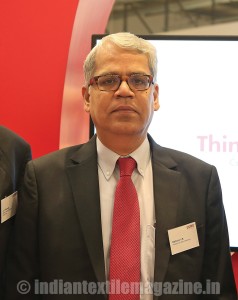
Vardhman has of course established world-class manufacturing standards to produce quality yarn for demanding high-end manufacturers of fabrics across the world. For example, it is keen on producing yarn that meets a very high level of contamination standards consistently and competitively. In this case, the group has built an excellent system, by judiciously integrating raw material selection and purchase and a highly knowledgeable team of employees combined with the latest technology machinery.
Uster Technologies wishes the Vardhman Group success all along and will continue its co-operation in many areas, including raw material sourcing, process control, quality management and beyond with its theme of technicians and products.
****************
Stäubli’s long-standing relationship with Vardhman
Mr. Fritz Legler from the Stäubli Group, observes: “The Stäubli Group is honored to be actively associated with the Vardhman Group. It is a privilege to be selected as a machinery and solution provider, and both companies share a long-standing and fruitful history.”
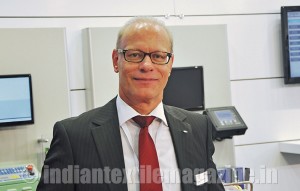
The local Director, Mr. S. Mahajan, with his team of 30 highly trained textile specialists, fosters successful co-operation with all levels of stake-holders and at all the Vardhman Group companies.
“Stäubli strives to further satisfy your requirements as we go along to partner with you for the next milestone achievement”, says Mr. Mahajan.
*********************
Bräcker AG’s rich tribute
Bräcker AG, the world’s leading supplier of high quality rings and travellers, a key component for the spinning industry, in its successful 180th year of operation, is proud to be associated with the Vardhman Group as a vendor and congratulates the iconic group in the Indian spinning industry on its completing 50 years of successful operation.
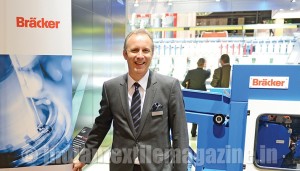
The Vardhman Group’s success story in setting many milestones in the 50 years as the first Indian player in the textile industry to cross the 1.0 Mio spindles mark under the vision and able guidance of its Chairman, Mr. S.P. Oswal, is remarkable. The factors contributing to the group’s success are its commitment to values, system expertise, innovative solutions, employee training and product quality.
Bräcker TITAN rings are the world’s most successful spinning rings. More than 45 Mio pieces have been sold to spinning mills around the world, ascertaining the Bräcker leadership position.
Bräcker ring / traveller systems offer the best value for money. Its continuous efforts towards developing new travellers in response to market demand enable the company to ensure optimum productivity and efficiency of the most modern ring spinning machines.
On this momentous occasion, Bräcker AG joins the others in wishing the Vardhman Group a successful journey ahead.
**********************
Vardhman-Savio successful partnership
Savio’s association with the Vardhman Group dates back to early 2000. Vardhman, an important customer, decided to invest into a modernized machinery pool with the latest state-of-the-art automatic machinery. It never hesitated to venture into new concepts, being the first Indian group to invest in Savio’a new products such as SIRIUS in 2010 and Eco Pulsar in 2015.
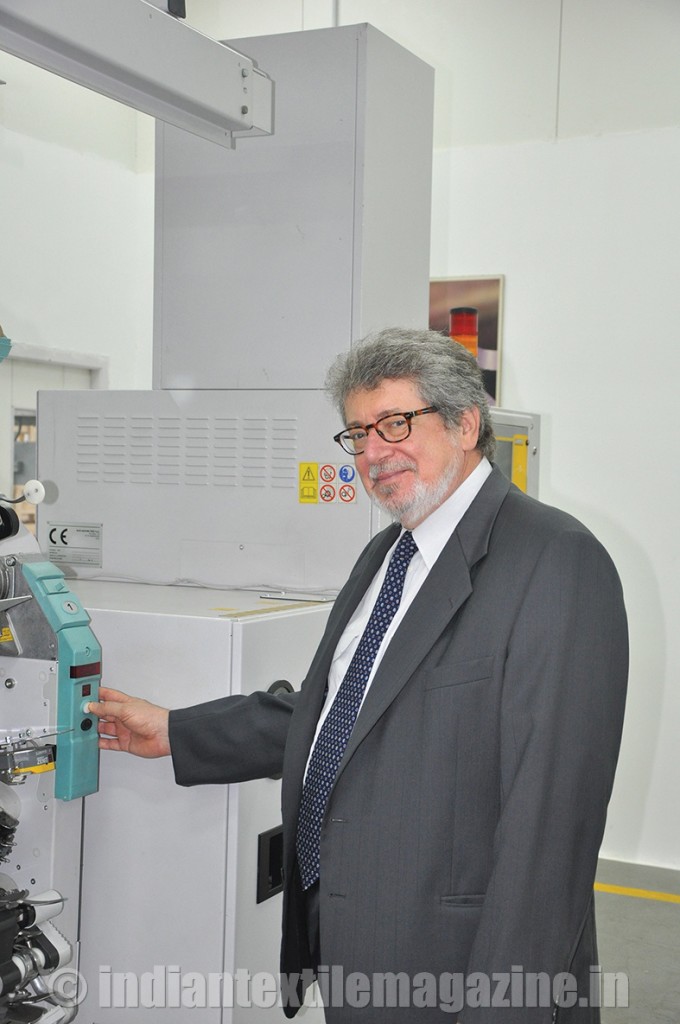
Vardhman was among the first to believe in the state-of-the-art machinery to enhance the quality of the end product, taking into consideration Savio’s most advanced and automated models for either greenfield and expansion projects.
The technological partnership is consistent in both winding and twisting: it has started with the supply of winders and SIRIUS twisters, and continuing today with the supply of Eco PulsarS, the latest winding machine in the Savio portfolio.
Savio has achieved the maximum automation possible with SIRIUS, the new generation of twisters. The main impact of this innovation is to cut the machine set-up time, thus reducing the number of operators for each machine, while introducing a simple direct system to change any setting.
Vardhman is the first Indian customer to purchase the latest winding technology, Eco PulsarS, showcased at ITMA 2015 in Milan. With its sustainable eco-green advantage, the technology fully meets the market demand for energy saving, including room air-conditioning, together with improved production performance, high quality packages and utmost flexibility. The combination of all these features has just created an environment in which each part of the machine can operate at its optimum level and without limitations.
Spindles and bobbins feeding systems set independently the level of suction required. Suction is generated as needed and used without loss. The new controlled cut system, yarn tension control system, waste collection & separation system and upgraded splicing solutions contribute to the overall reduction of process downtime.
******************
LCC all praise for Vardhman
Lakshmi Card Clothing (LCC) has been associated with the Vardhman Group since 1980. As a business partner, LCC has provided its card clothing, card service machines and technology solutions for over 25 years.
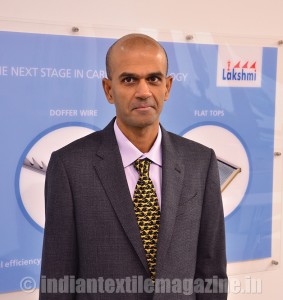
The experience with Vardhman has been extremely rewarding owing to the fact that any innovative product or solution given by LCC has been tried by the Vardhman Group. This has been providing LCC helpful suggestions and unbiased reports which have been invaluable in perfecting innovations. The LCC technological solutions have helped Vardhman to meet the growing demand for quality yarn.
LCC appreciates the Vardhman effort at creating a customer-oriented business, endeavoring to be creative and offering fair opportunities to every individual to be a part of its workforce.
On this momentous occasion of its completing 50 golden years, LCC congratulates the Vardhman Group and hopes that the ensuing years will prove a new era of openness, growth, new technologies and newer solutions.
********************
Praj’s zero liquid discharge solution for Vardhman Fabrics
Vardhman, the largest producer and exporter of yarns and grey woven fabrics from India, is also the largest producer of tyercord yarns and the second largest producer of sewing threads in India. Vardhman selected Praj, a leading solution provider of effluent recycling & zero liquid discharge (ZLD) plant for its prestigious textile project at Budhni in Madhya Pradesh. After successful installations for various industries and leading textile companies, Praj has successfully commissioned this ZLD plant to meet the norms set by the Pollution Control Board.
Praj is a global company offering innovative solutions to significantly add value in water & waste water treatment, Recycle & Reuse and Zero Liquid Discharge solutions. Praj’s ZLD system is energy efficient with proprietary evaporation technology. Its constant focus is on ‘reuse’ of water and achieving ZLD with its value added technologies. This ensures full recycling of treated effluent back in the process without disposing a single drop out of the Vardhman premises.
The highlights of the ZLD plant supplied by Praj at Budhni are:
“ECOVAP” evaporation plant: Praj provided its unique evaporation technology called ECOVAP to concentrate the RO reject. This is a proven technology for treating complex effluents across the world. Praj has successfully installed and commissioned plants based on the ECOVAP technology in various industries such as textile, chemicals & fertilizers, pharmaceuticals, food, beverages, etc.
ECODRY – TF (ATFD): To convert concentrated liquid into dry powder, Praj has installed the agitated thin film dryer. The entire system supplied is designed, engineered and manufactured in-house by Praj and delivered to the Vardhman site.
*******************
A century beckons!
– S.P. Oswal, Chairman
We are in an interesting and exciting phase in our history of 50 years. While we have accomplished a great deal, our journey is never complete, particularly in an ever-changing environment where threats and opportunities present themselves. Through our experience and knowledge, we need to recognise these threats and develop capacity to adapt to not only survive but also thrive.
The Vardhman Group journey of 50 years is replete with experiences, both bitter and sweet, which have helped shape our organizational character.
In the life of a business, turbulence and crisis are inevitable between periods of calm and stability. Steering through then with a steady hand builds strength, resilience and fortitude, deepening organisational character and enabling one to move from one challenge to another. We believe that an organisation’s ability to cope is fundamentally dependent on its capacity to perpetually learn from experiences.
We have built processes to collectively analyse and reflect on our experiences with equanimity. We try to cultivate this attitude in every employee. We are not daunted by failures and setbacks as we convert them into learning opportunities, embed them in our organizational memory and resolutely move forward.
In order to explain what Vardhman is today, it may be helpful to recount some of our defining moments and organisational values.
Learning organization
A learning organization has been a part of our vision. This never allows complacency in our approach and rigidity in our thoughts. A response to any situation remains dynamic and is not born out of ideological or philosophical bias. At Vardhman, we have developed a capacity to deal with every situation through proper analysis and understanding with a fresh look through a process of introspection and rebuilding exercise.
Let me provide an example of one such defining moment and its outcome. In 1982, there was labour unrest in the factory, which turned violent resulting in the factory remaining closed for more than six months and thus threatening our survival. We extracted learnings from this incident to develop an institutionalised training and skill development programme. Beyond skill development, we underscored the dignity of work and inculcated a sense of employee belonging.
The outcome is that the Group has a Manav Vikas Kendra in each manufacturing plant which acts as the centre of such training. In turn, this has moulded the organisation’s attitude to people and become a focal point for the management, as people are the key assets to create value. The soft processes for employee engagement like Quality Circle, TPM, Kaizen, group communication meetings, etc., have been firmly embedded in our organisation’s culture, which has been meaning fully embraced by our people.
Similarly, a formidable challenge emerged in mid-1980s as lawlessness prevailed in Punjab due to political turbulence and a consequent reluctance of professionals to reside within the State. We responded with two strategic initiatives – recruiting and developing local talent and geographical dispersion.
We scouted for young, smart, dedicated and ambitious young men and women with basic qualifications. Through our Executive Training programme, we turned them in to star performers. They have built the Vardhman of today through hard work and a sense of ownership.
Simultaneously, we decided to diversify geographically, which has now given us an all-India presence marked by national visibility and a wider access to talent, raw materials and markets, generating attractive returns.
Though we remained focused for almost 30 years on spinning, when the opportunity came following changes in Government policies that provided a level playing field for the textile composite sector, we integrated vertically in the fabrics business by establishing weaving and processing facilities. We had mastered spinning technologies and products; we were now needed to master unrelated business segments through the pursuit of excellence in our DNA, which we accomplished. We entered the sewing thread business and soon challenged the global leader in this field with a near monopoly in the Indian market. This attracted the attention of another global player with whom we forged a partnership to exploit mutual synergies.
In a short time, the Group has established a strong position in the apparel fabric segment. We enjoy the patronage of global retailers who have approved sourcing of fabric from us for their domestic garment production and also for markets like Bangladesh, Sri Lanka and Vietnam. The hand knitting yarn of the Vardhman Group is the first preference of consumers in India. In all these businesses, we have emerged as number one or two in terms of size, market reputation and profitability.
After we commissioned an acrylic fibre venture, many new plants came up, creating a glut. The industry became sick and many units either closed or were in a precarious condition. We not only survived but also set operational benchmarks at par with global companies.
A pursuit of learning, drive to excel, timing of opportunities and a conservative but sound financial sense have helped us emerge as leaders. The manufacture of textiles is an easy entry business.
Competition is severe and consequently margins are low and cyclical. Continuous growth and attractive financial returns are difficult. Only through strategic insights, prudent timing and operational excellence can sustainability be achieved. Underlying this has been our commitment to nurture talent, transparency in decision making, continuous process refinement, dedicated hard work and a focus on shareholder value.
We have come a long and weary way. With full confidence we are determined to march ahead.
Companies have long lives. What is a period of 50 years? A century beckons!
